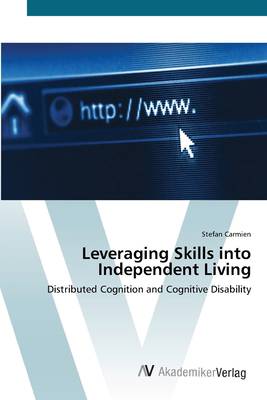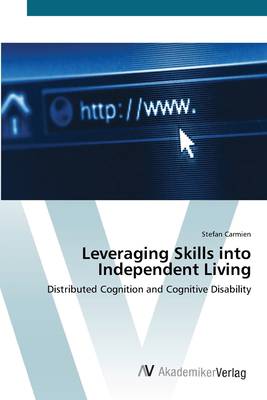
- Afhalen na 1 uur in een winkel met voorraad
- Gratis thuislevering in België vanaf € 30
- Ruim aanbod met 7 miljoen producten
- Afhalen na 1 uur in een winkel met voorraad
- Gratis thuislevering in België vanaf € 30
- Ruim aanbod met 7 miljoen producten
Zoeken
Leveraging Skills into Independent Living
Distributed Cognition and Cognitive Disability
Stefan Carmien
Paperback | Engels
€ 78,95
+ 157 punten
Omschrijving
Revision with unchanged content. In the US alone, over four and a half million people have cognitive disabilities. Except for deficiencies of mnemonic and executive capabilities, many of them have the potential to live a more independent life. In this book, the author describes a design approach and an example system aimed at providing support to those missing abilities in a socio-technical environment. The system, MAPS, consists of two technical components: a script design tool that allows a caregiver to create, store, edit and reuse scripts of multimedia prompts to guide users thru tasks, and a PDA-based prompter that plays those scripts for persons with cognitive disabilities. The process of technology adoption was also studied as the MAPS system was put in use doing real-life tasks in home, shopping, and employment environments. By extending human-computer interaction (HCI) frameworks, theories, and perspectives, this research shows new ways of using traditional HCI in the design and use of prompting systems. More importantly, this study presents a set of heuristics to aid in the general design of assistive technology with an aim of preventing technology abandonment.
Specificaties
Betrokkenen
- Auteur(s):
- Uitgeverij:
Inhoud
- Aantal bladzijden:
- 256
- Taal:
- Engels
Eigenschappen
- Productcode (EAN):
- 9783639412918
- Verschijningsdatum:
- 18/05/2012
- Uitvoering:
- Paperback
- Formaat:
- Trade paperback (VS)
- Afmetingen:
- 152 mm x 229 mm
- Gewicht:
- 381 g

Alleen bij Standaard Boekhandel
+ 157 punten op je klantenkaart van Standaard Boekhandel
Beoordelingen
We publiceren alleen reviews die voldoen aan de voorwaarden voor reviews. Bekijk onze voorwaarden voor reviews.








